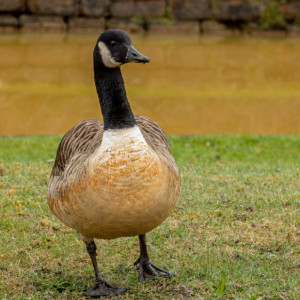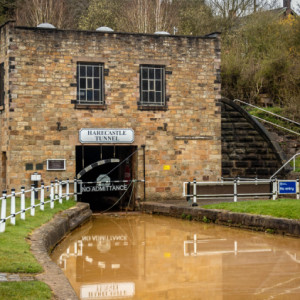Harecastle Tunnel
We walked along the Trent and Mersey Canal today to the Harecastle Tunnel. The tunnel runs between Kidsgrove and Tunstull in Stoke-on-Trent, under Harecastle Hill for 1.5 miles ( 2.4km). It was used to transport coal to the kilns of the pottery industry.
It's actually 2 separate parallel tunnels built 50 years apart. The first was constructed by James Brindley in the late 18th century and the second larger tunnel was designed by Thomas Telford, and opened in the late 1820s.
Only the Telford built tunnel remains in use (on the right). A partial collapse closed the Brindley tunnel just before the First World War.
As the Brindley tunnel had no towpath, boatsmen had to leg their way through the tunnel. Legging was done by lying on the roof of a boat and using the feet to push forward against the tunnel walls. It took about 3 hours to travel through. While the narrowboats went via the tunnel, boat horses were led over Harecastle Hill via Boathorse Road.
The Telford tunnel was built to ease congestion and had a towpath which meant the horses could pull the boats through the tunnel reducing the time taken. Each tunnel was then used to take traffic in the opposite direction.
In 1954 a large fan was constructed at the south portal to improve ventilation for diesel-powered craft. While boats are within the tunnel an airtight door is shut so fresh air is constantly drawn through the tunnel. The fan protects boaters from the harmful build-up of diesel fumes. Modern journey times are now about 30–40 minutes.
In the latter part of the 20th century, the Telford tunnel also began to suffer from subsidence resulting in its temporary closure between 1973 and 1977.During this time, the long-disused towpath was removed to increase the width of the tunnel and improve air capacity in the tunnel.
The rusty colour of the water is due to leached iron ore. The Canada goose in the extra looks a bit discoloured due to swimming here.
There's also supposedly meant to be a ghost in the tunnel. A spirit of a woman who was murdered by boatmen as she travelled to London by canal barge through the Harecastle Tunnel.
A sighting of her headless ghost is thought to mean doom and disaster, and it is said she was seen on the morning of many of North Staffordshire’s worst mining disasters.
We went out early enough not to meet too many folks. It wasn't the most scenic of walks but it was certainly a trip through Stoke-on-Trent's industrial past.



Comments
Sign in or get an account to comment.


